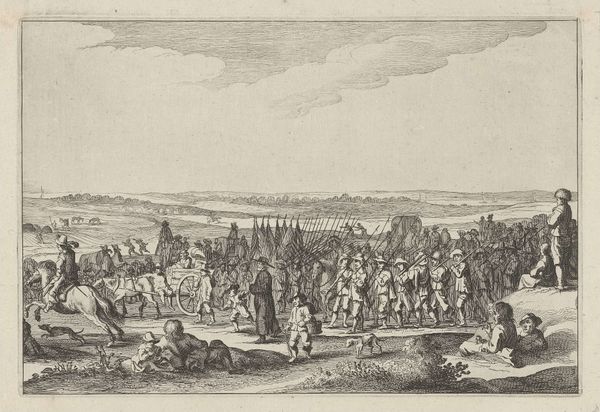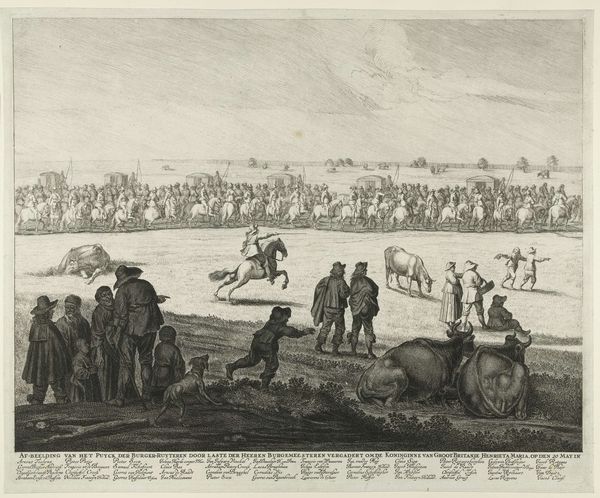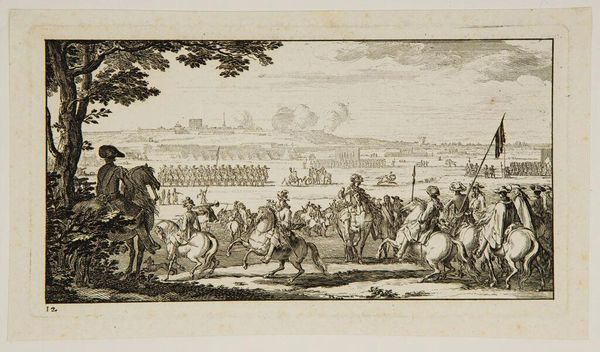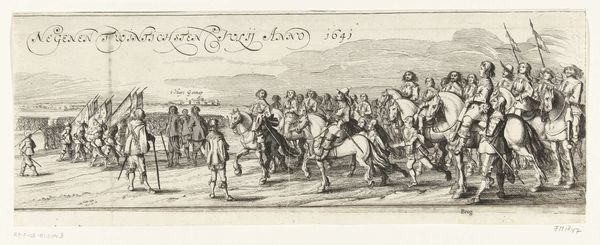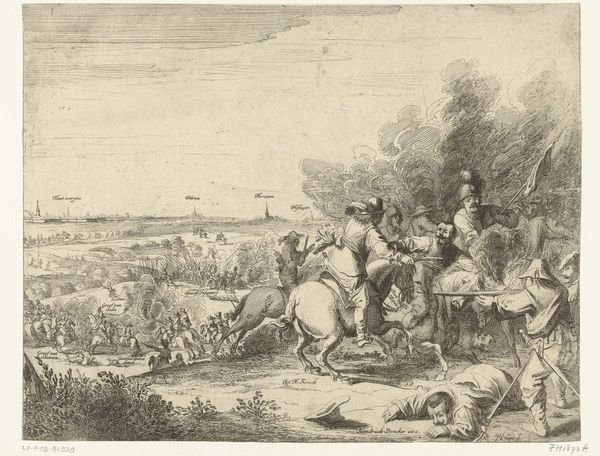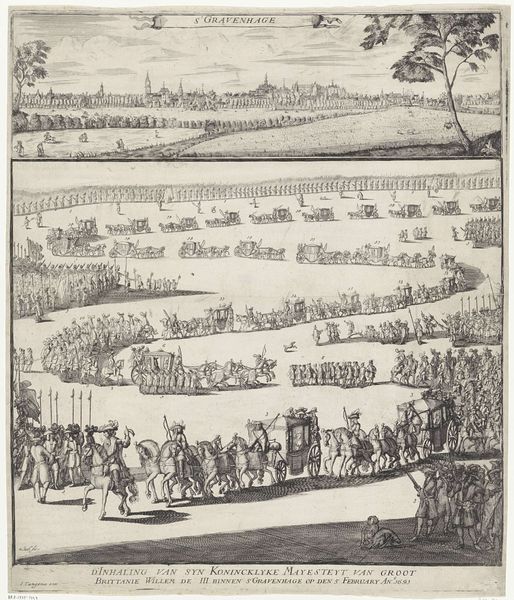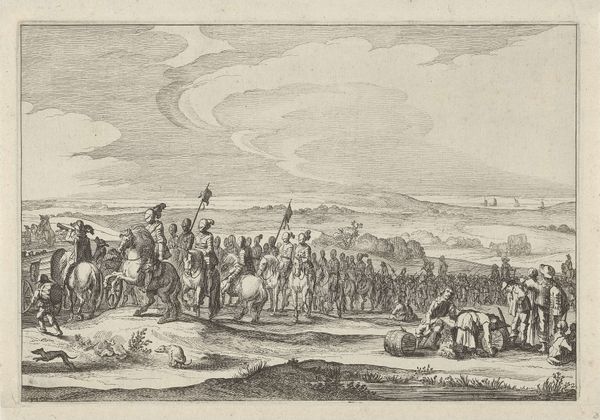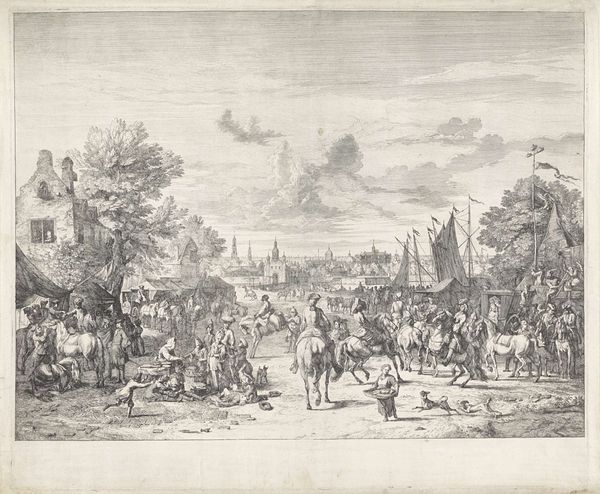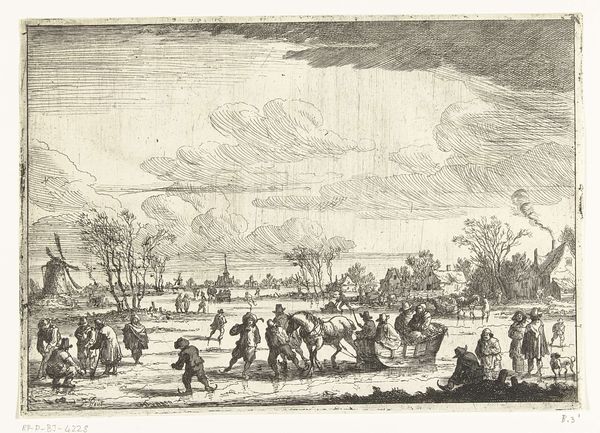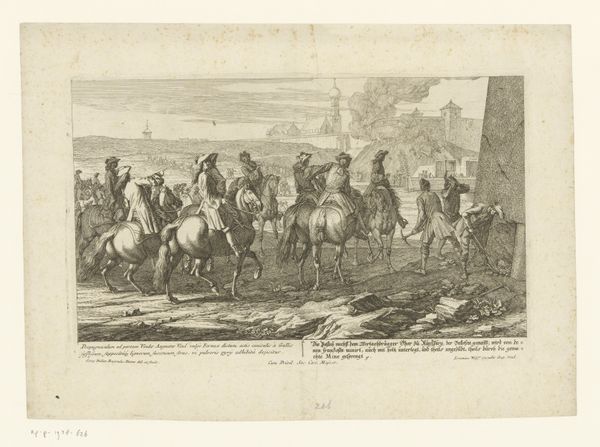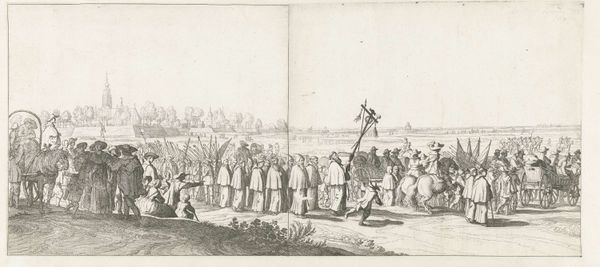
Optocht van de schutters langs de Haarlemmertrekvaart bij de intocht van koningin Henrietta Maria te Amsterdam, 1642 (rechterblad) 1642
0:00
0:00
print, engraving
#
aged paper
#
dutch-golden-age
# print
#
old engraving style
#
landscape
#
personal sketchbook
#
genre-painting
#
history-painting
#
engraving
Dimensions: height 400 mm, width 492 mm
Copyright: Rijks Museum: Open Domain
Editor: This is Pieter Nolpe's "Procession of the Civic Guard along the Haarlemmertrekvaart on the Occasion of the Entry of Queen Henrietta Maria into Amsterdam," created as an engraving in 1642. The detail is incredible, especially given the medium, but it also feels...documentarian, almost like a newsreel. What do you see in it? Curator: I see the intersection of labor, materials, and social function, plain as day. Look at the production: engraving, a repeatable medium, allows for wide dissemination of this event. Consider the labor involved, from the artist and engravers to the printers distributing these images for profit. Who consumed these prints and why? Were they collected as mementos, traded as commodities, or used to shore up political power? Editor: So, you're saying it’s less about the queen's arrival and more about the print itself as an object of its time? Curator: Precisely. And beyond its function as propaganda, look at the material reality. The paper itself, the ink used - what were the costs, and where did they originate? These details point to larger trade networks and economic systems at play. Was the paper locally sourced or imported, adding to the cost and reflecting the vast colonial reach of the Dutch at the time? Editor: I never really thought about where the materials *came from* for something like this. It definitely changes my perspective on how to interpret its value, especially the economic value for the society. Curator: Exactly! The lines are blurred between "high art" and the means of its making. Thinking this way connects the artistic moment to broader economic and even colonial histories. What happens when we see art as work? Editor: Food for thought, definitely. Thanks for broadening my understanding of what's "in" the picture. Curator: My pleasure. Material considerations help us better understand not just what the art depicts, but how and why it was created and consumed in the first place.
Comments
No comments
Be the first to comment and join the conversation on the ultimate creative platform.


